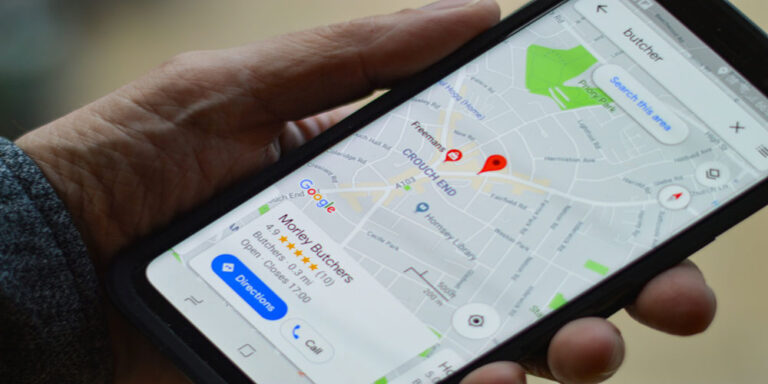
Search engine optimisation is the process of enhancing your website’s overall structure and content so that it targets profitable keywords in search results, and ranks highly for those keywords, allowing your company to generate more leads, more customers, and ultimately, have a higher profit. If implemented correctly, SEO can bring a constant stream of traffic to your website, leading to continual lead generation.
With excellent optimisation and profitable keyword targeting, a website’s traffic can easily double, over the course of a few months. In fact, SEO can determine the overall success a website will have in the long term.
SEO spans a variety of sub-disciplines, from link building to content creation, and even reaching out to social media influencers.
However, carrying out SEO on your website should be a long-term strategy rather than a quick fix. It should integrate with the core foundations of your website, so that you can build from that solid foundation, rather than make patches to an already shaky one. Search engine optimization should be integrated into every aspect of content creation, copy writing, and website design.
In this article, SEO: How It Works, we’re going to check out how SEO works and the measures you can take to make sure that your website is optimized.
How Does It Work?
Whenever you create a page on your website, it’s going to contain keywords that’ll tell Google exactly what your page is about.
Google have bots that crawl the entire surface web. So after you publish your page, and you link to it from another already indexed page, a spiderbot from Google will arrive on your page, crawl all of its contents, and determine what keywords or search terms your page should rank for.
Your page, as well as its targeted keywords, are then indexed in Google’s database, and when a user types in search terms related to your page, your page will appear in search results.
The success of your SEO integrations will largely influence where your website will rank in search results. Google will rank the websites they deem to offer the greatest user experience first, ie: pages that have a track record of retaining users, engaging users, and offering a fantastic user experience.
In search results, most users don’t stray past the first page, so if your page ranks on page ten for a keyword, then the likelihood of the user finding your page and clicking the search result is extremely slim. In fact, the real majority of users don’t go beyond the fifth search result, so ranking in that top five is essential to generating leads and having customers arrive to your site on a daily basis.
The Importance of Keywords
The keywords your website ranks for can often be more important than its position in search results.
For example, if your website ranks in the first position for a keyword that very few people search for, then traffic to your site will be minimal to non-existent. However, if your site’s targeted keywords are searched by thousands of people a day, then you can see the kind of lead generation you’ll be having!
This is why keyword research is essential; it’s safe to say that keyword research is the lifeline that determines the success of any website.
You can check how many users search for keywords via the Google Ads Keyword Planner. Just use your Google account to sign in to Google Ads (previously AdWords) and click on the Tools icon in the navigation bar to see the link to the Keyword Planner.
When carrying out keyword research, you also need to determine competition. For example, what kinds of sites rank for your keywords? Forbes? Highly influential sites?
It can be difficult to knock these sites off their positions, because of the high trust Google has in their content.
This is why you also need to make sure that ranking on page ten for your chosen keyword is a possibility, by looking for smaller blogs and sites that can easily be surpassed.
The key trait you need to build with Google is: trust.
– Do users arrive to your website, stay on it for a few minutes, and then possibly write a comment, or move deeper into your website?
That’s a sign your users like what they see, they find exceptional value in your content, or have had a positive experience on-site.
This metric is checked by Google, and is known as Bounce Rate, as well as time on-site. This increases your trust with Google.
– Do users hit the Back Button as soon as they arrive? This signals that your website offers a poor user experience, or that the content you provide is of a low quality. These kinds of metrics will alarm Google, and they may not value your site as highly; hence, your website loses trust, and may drop in search engine rankings.
It might also signal that your website isn’t optimized for mobile, and has provided a Desktop site to a user using a phone. This is poor UX in general, and is an instant turn-off for users. You can make your website mobile by using Bootstrap or media queries in your website’s CSS.
-Does your website take too long to load? If so, this could be a sign of poor structure, or that the website is trying to load too many media-heavy assets or JavaScript files. This leads to poor user experience, and may discourage them from waiting for you site to load in the first place. You can measure the speed of your website, and get personalised and tailored options with Google PageSpeed Insights.
How To Increase Trust With Google
The key to building trust is to write exceptional content, the type of content that answers the user’s query in an engaging, easy-to-read manner and is extensive in both research and fact.
For non-blog-post style pages, make sure your copy is as tantalising and appealing to the reader as possible. What you need most is to keep the user on site for as long a time as possible, as this illustrates to Google that your user has chosen to stay, therefore your page must offer incredible content and has led to a customer being satisfied with the content they’ve found.
For example, you could include a variety of interactive media to add a dynamic, engaging aspect to your content, such as YouTube videos or imagery. You can find public domain imagery on Unsplash and Pixabay. Adding imagery and video will prolong the user’s time on site, and will keep the content engaging and appealing.
Invest in your website’s UI and UX. A seamless user experience will only increase overall Page Time, and your site will gain exceptional trust, and high value in Google’s eyes. As mentioned before, a mobile site is an absolute must in 2018 and onwards, and also make sure that your site is quick to load by reducing your JavaScript assets and other media-heavy content that is unnecessary.
Backlinking
The days of getting hundreds of poor-quality back-links have gone, and user experience has taken its place.
In fact, the whole concept of PageRank (and the key factor that helped position Google at the forefront of the search industry) was to assess the trust Google could have in your website. If other sites linked to your page, then it was a recommendation of sorts, a high appraisal that looked favourably upon your website.
But now, Google have removed less of the emphasis on PageRank, and now also consider other factors in order to measure the trust they have in your site; by seeing how long a user spends on-site and how much they engage with the content within.
Backlinks are still important, however, and you should set a backlinking strategy aside in order to still gain these “recommendations” from other sites.
Guest posting, where you write a blog post for another website in exchange for a backlink to your website, is largely frowned upon in the SEO industry these days, but you can still write content for other blogs and lightly mention your website in the Bio of your Author section. You should aim to get a backlink from a high authority blog at least once a week, if possible.
You can also contact social media influencers to link to your content on social media. This may lead to bloggers and website owners discovering your content, and also linking to it on their websites. As you can see, this can easily lead to a knock-on effect where your traffic will increase, leading to more exposure, and ultimately more high-quality backlinks.
Conclusion to SEO: How It Works
As you’ve seen from this article, SEO is an essential foundation that you need to build upon, and that takes time and practice, but once you’ve refined your strategies, you’ll find out what works best for your site.






